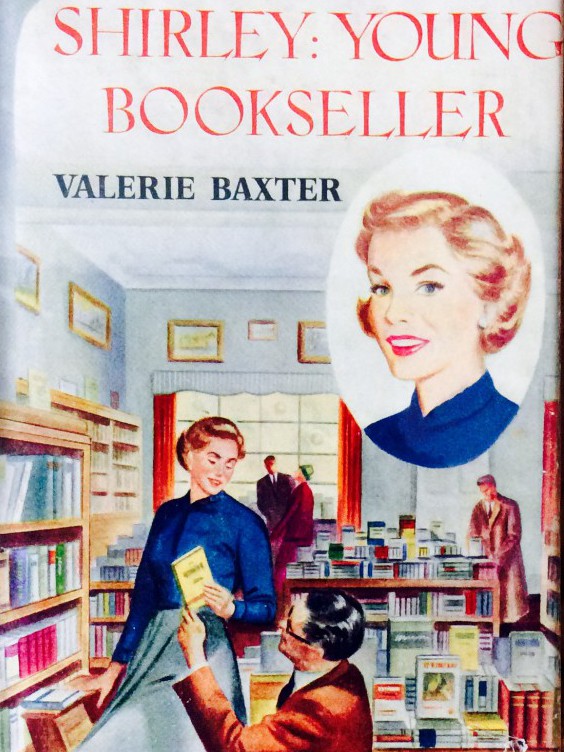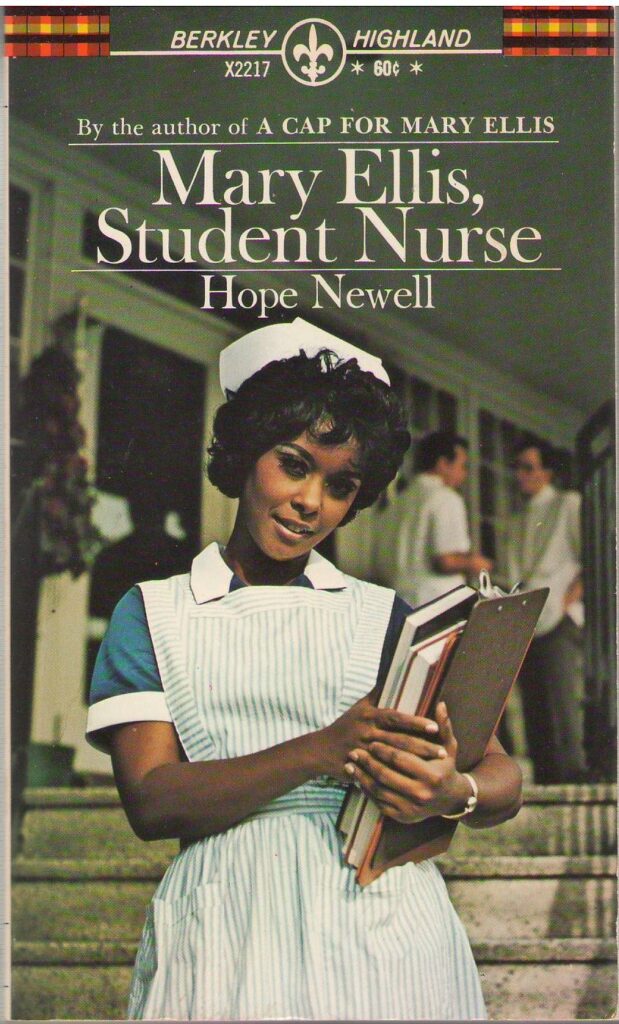Sponsored by Booked Up All Night.
Book Riot is teaming up with Booked Up All Night to give away a $200 gift card to Books-A-Million. Just enter the form and sign-up for their newsletter for a chance to win!
Hey YA Readers!
I’m pulling this newsletter together for the first issue of the new year from an Extra Credit episode of Hey YA. You are welcome to tune in to it, though that’s not necessary. I’ve forever been fascinated by YA history and one of the aspects I find so interesting are the career novels of the late 40s through the 60s/70s. Here’s a deep dive into what they were and what happened to them.
—
There is so much fascinating stuff to think about and explore when it comes to the early days of young adult literature. The first official YA book, as I talked about in a previous episode of Hey YA Extra Credit, is often cited as Maureen Daly’s Seventeenth Summer, published in 1942, right before the Second World War. Though it wasn’t until after the war when the category of fiction for teenagers started to grow — coinciding, of course, with America’s burgeoning white middle class and its understanding of teenagers as a demographic with access to time and money.
In those changing times came an array of topics the young adult market dipped into that reflected socio cultural norms of the era. Catering to white, cisgender, heterosexual middle class readers was assumed and reflected in the content of these books, but so were norms that encouraged teen girls to find partners, prepare for homemaking, and get excited about their big days as brides in their dream White wedding.
But in those early years were the career novels: formulaic stories of girls preparing for jobs outside the home. They began in the 30s and 40s, before the label YA emerged, and these books found their height in readership in the late 40s and 50s, paralleling the rise of teen culture.
This is a look at what the career novels were, some of the popular titles, as well as some of the characters who steered these stories.
What Were Career Novels?
As more women entered the workforce post-war — something that was a reality of the time, despite how much pressure was still on white women and girls to serve as homemakers, mothers, and excited by partnerships and romance — publishing sought opportunities to reflect this in books for teen girls. Teen girls especially were expected to work in the gap period between graduation and marriage. Thus, the birth of the career novel.
 |
These books, which featured a formulaic structure, and frequently recurring character readers would know by name, were both meant to be entertaining and instructive. The career novel was an opportunity to show adolescent girls what sorts of opportunities existed for them that may never have been available before. It’s worth emphasizing here again that the audience for the bulk of these books were middle class and upwardly mobile cis, straight white teen girls, as teens of color and those from lower classes were always expected to work in some capacity. For white teen girls, this was an entirely new world.
Early examples of the career novel leaned heavily on the educational angle, allowing girls to follow alongside the title heroine as she learns how to do her career then as she advances through different types of careers possible in the field. Typically, that character had just graduated from high school, moved away from home for the first time, and was going through the motions of creating a life for herself while she waited for bigger things, namely starting a family.
These early career novels often included a mentor who’d help the protagonist understand the ups and downs of the field she was entering, and many also included appendices, indexes, glossaries, and other reference material in the back of the book for readers to use were the career one of interest to them.
Many were also part of a series of books, ranging from a couple of titles to long runs numbering in the double digits.
Careers covered in these books changed over the course of the decades. Titles in the 30s and 40s featured female-dominated careers such as hairdressers and secretaries, and over the years, shifted to more splashy careers — all of which were, no surprise, female-dominated and low pay, including nurses, airline attendances, and teachers. There were others, more rare and novel, which included women with careers as doctors and lawyers.
The inclusion and emphasis on romance that emerged in some of these novels weren’t, of course, simply for a subplot. They were about marketability to teen girl readers, for sure, but they were also a not-so-subtle means of reminding teen girls of their greater role in society. They’d be expected to slow down their own careers once they took up their real jobs in the house, as was their prescribed cultural role. Yes, the market was growing for career women, but it was a fluke. That proposal meant time to go back home and take up the tasks of domestic management.
Was it a fluke, though? Or were these books ignoring bigger shifts in society?
By the 1970s, career novels essentially vanished from the marketplace. Their run in popularity died alongside the notion that women were expected to be in the house. Though it’s clear from how YA shifted in those years that heteronormativity was expected, the emphasis that teen girls should be making themselves marriage material had waned, as had the novelty of girls desiring to have a career and a family. We can thank feminism, partially, as well social activism, a rise in the middle class, a boom in the value of and drive for higher education, and, perhaps more simply, capitalism as a fact of American life. The more people who were in the workplace, the more who could be consumers.
What began as seeing teens as a marketable demographic shifted and morphed alongside their coming-of-age.
Another factor for the disappearance of career novels could be easily attributed to the rise of YA novels that were more broadly known as “problem novels.” These, too, were formulaic, but rather than explore careers as their central plot, they took a tough topic teens faced and proceeded to create plots and resolutions which played out like afterschool specials. SE Hinton’s 1967 The Outsiders is considered the first “problem novel,” and given the success of that book for teens by a teen, it’s no surprise this genre grew.
Though the career novel as a genre disappeared, careers in YA aren’t all together gone. They’ve morphed and changed. Some readers and scholars believe that the career novel found a new iteration in the “chick lit” genre which emerged in the 90s, though those books — problematic name and all — leaned more toward being romance-lite in genre.
What Were Some of the Career Novels?
The most well-known career novels in the US were likely the Cherry Ames series. Launched in 1943 and running until the mid-1960s, the series follows title character Charity — nickname Cherry — Ames through 27 volumes as she solves mysteries taking place in the hospital. Ames was a nurse, and the series showcased all of the exciting opportunities in the career field — and the potential for real adventure while at work.
The series begins with Cherry working at her local hospital before taking part in the Army Nurse Corps and moving to New York, then other cities around the country. Much of the stories are modeled like Nancy Drew, and throughout the series, Cherry remains independent in her quests to solve the mysteries. This particular series is noteworthy in its longevity, and at once point even had a board game. The 1959 game encouraged players to obtain various levels of nurse training around the board, obtain various colored rings, and be the first to “graduate” from school.
Throughout the years, Cherry Ames titles have periodically been reprinted for nostalgic purposes, and in the 1990s, there was even a lesbian pulp parody of the series by Mabel Maney, starring “Cherry Aimless” and “Nancy Clue.”
 |
Thirty primary titles, as well as a handful of spinoffs, comprised what are known as the Bodley Head career novels series, published by Bodley Head and John Lane and written by a range of authors. Among some of the titles in this series included author Valerie Baxter’s Elizabeth, Young Police Officer; Hester, Ship’s Officer; and Shirley, Young Bookseller.
Author Elizabeth Churchhill brought Juliet in Publishing, Pamela Hawken had Air Hostess Ann, Jane Sheridan penned Amanda in Floristry, while Joan Llewelyn Ownes wrote Margaret Becomes a Doctor, Sue Takes Up Physiotherapy, and Diana Veterinary student. There was also a two-parter from Bertha Lonsdale, starting with Molly Hilton, Library Assistant, followed by Molly Qualifies as a Librarian.
It’s impossible not to note the very contemporary names of the time for both the characters and the authors, many of which were likely pseudonyms. All of them were very white.
One of the most successful spinoff series from Bodley was the Sue Barton series, about a nurse, as well as the Carol theater series, following a young actress who works on Broadway, goes on tour, and plays summer stock. Both series were penned by Helen Dore Boylston. It’s especially interesting to see within the Sue Barton series how Sue moves from being a student nurse to a senior nurse, a visiting nurse, a rural nurse, a superintendent nurse, and more through eight volumes of the series.
Perhaps most interesting is Boylston, the author: despite the fact these books reiterated societal norms of love, marriage, and parenthood, she herself never married nor had children. She and Rose Wilder Lane, daughter of Laura Ingalls Wilder, were friends in their youth and traveled together. Boylston drew much of what she wrote about in nursing from her own experience in the field, both in hospital settings and on the field, traveling as part of the Red Cross in the first World War. She wrote a memoir about that time titled simply Sister: The War Diary of a Nurse.
 |
Though the vast majority of career novels were by and about white people, at least the nursing-focused books periodically included girls of color. The Mary Ellis series by Hope Newell, published in 1958, features a Black adolescent girl as the lead, as she studies and prepares to take a career in nursing. Mary Ellis and her friend Julie are the leads in A Cap for Mary Ellis, the first in a duology. After both do very well on their qualifying exams, they’re invited to be the first Black students to attend a prestigious upstate New York program, where they indeed encounter racism and prejudice by their white classmates.
Career novels were plentiful in the UK, as well, and they included books like the sixteen-book series Shirley Flight, Air Hostess; as well as Kit Hunter, Show Jumper; and Sally Baxter, Girl Reporter.
Janey Scott authored a four-part series in the early 60s featuring Sara Gay, Model Girl, also in the UK. For anyone who loves the narrative of the struggling model who just happens to be discovered one day after unsuccessful attempts to break into the business, this series will tick all of those boxes. It includes, of course, some cut-throat, girl-against-girl rivalry. This angle is particularly interesting, given that many of the books showcased friendship among girls, if any relationships with other girls outside of the family were present at all.
Don’t forget you can get three free audiobooks at Audiobooks.com with a free trial!
Career Novels Today
Career novels are long out of vogue, but they’re not gone all together. Readers who love collecting vintage books are fervent in seeking out these career book series, and there are a number of websites dedicated to helping collectors ensure they have each volume in a series. Some, like the aptly-named Series Books, also offer insight into the relative ease or challenge there is in tracking down these books.
A number of these books can also be found in full text legally, thanks to public domain laws. You can, for example, read the entirety of Cherry Ames: Island Nurse through Hathi Trust.
More interesting, though, is that, much like books like Seventeenth Summer, career novels are a magnifying glass to a very specific demographic at a very specific time in American history: it’s very white, it’s middle class, and it reflects the values and cultural narratives surrounding proper girlhood prior to marriage. Though there were books featuring Black girls — the Mary Ellis series being a great example — the histories and legacies of those stories and the authors of them have not been anthologized or memorialized in the same capacity. It’s quite likely there are fans and scholars working in this area of literary history, though their voices and insights are not yet at the same level as those who are white. What is it we haven’t discovered yet and what can we hope to see as more scholars highlight what has long been buried?
It’s also, of course, worth noting that until the emergence of the “problem novel,” the bulk of books targeting teen girl readers were romance, re-affirming the idea that it’s normal to engage in hereonormative practices and put one’s own desires to the side as soon as love enters the picture.
Even if the authors of these books themselves didn’t follow that script.
If this topic interests you and you want to explore further, I’ve included some resources below. The span of career options are especially fascinating, though as mentioned earlier, the number of careers that were feminine in nature and lower in pay definitely exceed the more well-paying fields. Where we have such an emphasis on STEM and encouraging underrepresented genders in science, technology, math, and engineering, those are mostly absent in career books, unless they’re seen as “lesser,” more “mothering” in nature — see nursing.
Resources:
“Is The Nurse Portrayed in Career Novels Fiction or Real?”
“Mapping a History of Adolescence and Literature For Adolescents“
Series Books website
Thanks for hanging out, y’all, and we’ll see you on Thursday with your YA news and new books for this first week of the new year.
Until then, happy reading!
— Kelly Jensen, @heykellyjensen on Instagram
